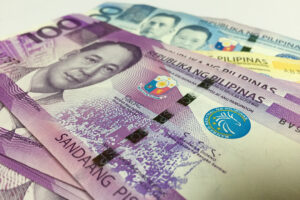Bank lending growth picks up to 27-month high in September

CREDIT GROWTH picked up to its fastest in 27 months in September as economic activity continued to rebound despite rising borrowing costs, and with liquidity also rising.
Preliminary data from the Bangko Sentral ng Pilipinas (BSP) on Monday showed outstanding loans by big banks, net of reverse repurchase (RRP) placements with the central bank, rose by 13.4% year on year in September to P10.494 trillion, picking up from the 12.2% growth logged in August.
The September pace was the fastest in 27 months or since the 11.2% expansion recorded in May 2020.
On a month-on-month seasonally adjusted basis, lending net of RRP placements with the BSP increased by 1.7%.
Meanwhile, including RRPs, bank lending grew by 12.5% in September, faster than the previous month’s 11.6%
Broken down, outstanding loans to residents net of RRPs grew by 13% to P10.169 trillion in September from 12.1% in August.
Borrowings for production activities rose by 12.3% to P9.203 trillion in September, fueled by an expansion in loans for real estate activities (16.3%); manufacturing (16.2%); information and communication (25.5%); and wholesale and retail trade, repair of motor vehicles and motorcycles (10.8%).
Consumer loans to residents also jumped by 20.5% to P965.994 billion, faster than the 18.3% growth seen in August, amid an increase in credit card loans (26.1%), motor vehicle loans (4.3%), and salary-based general purpose consumption loans (56.8%).
Meanwhile, outstanding loans to non-residents net of RRPs expanded by 26.6% to P324.808 billion in September, faster than the 16.3% growth seen the previous month.
“The continued expansion in lending activity and ample liquidity will support the recovery of economic activity and domestic demand. Looking ahead, the BSP will ensure that liquidity and lending conditions remain consistent with its price and financial stability mandates,” BSP Governor Felipe M. Medalla said in a statement.
Rizal Commercial Banking Corp. Chief Economist Michael L. Ricafort said in a Viber message that credit growth continued to pick up in September “as the economy reopened further towards greater normalcy.”
“Loan growth again sustaining double-digit growth rate recently … has become one of the bright spots in the Philippine economy and also fundamentally supports faster economic growth, going forward,” Mr. Ricafort said.
“However, offsetting risk factors include higher inflation and higher local and global interest rates that fundamentally increase borrowing costs of consumers, businesses, government and other institutions,” he added.
BSP Governor Felipe M. Medalla last week said the central bank could match the Federal Reserve point by point to support the peso and prevent it from feeding into price pressures.
Mr. Medalla said the Monetary Board could raise benchmark interest rates by 75 basis points (bps) at their Nov. 17 meeting if the Fed delivers a hike of the same magnitude at their Nov. 1-2 review.
The central bank has so far raised benchmark interest rates by 225 bps this year as it seeks to rein in rising inflation, while the Fed has hiked borrowing costs by 300 bps since March.
The BSP sees inflation averaging 5.6% this year, well above its 2-4% target. In the first nine months, the consumer price index averaged 5.1%.
For October, the BSP expects headline inflation to have settled within 7.1-7.9%, up from 6.9% in September.
MONEY SUPPLYAs lending growth continued to pick up, M3, or the broadest measure of liquidity in an economy, expanded by 5% to P15.35 trillion in September, preliminary BSP data released on Monday showed. This was slower than the revised 6.7% growth in August.
On a month-on-month seasonally adjusted basis, M3 decreased by 0.2%, the BSP said.
Domestic claims rose by 10.8% in September, slower than the revised 11.4% in August. Claims on the private sector grew by 10.1% from 8.9% the previous month amid increased lending to non-financial firms and households.
Meanwhile, net claims on the central government grew by 15.3% in September, slowing from 21.2% in August, on sustained borrowings by the National Government.
On the other hand, net foreign assets (NFA) in peso terms contracted by 1.7% in September following the 0.8% decline the prior month.
“The NFA of banks declined mainly on account of higher bills payable. Meanwhile, the BSP’s NFA position was broadly steady year on year,” Mr. Medalla said. — Keisha B. Ta-asan




